Disability is a complex phenomenon — it represents the interaction between a person’s physical abilities, the activities they need to perform, and the architectural barriers within their surroundings. Each individual experiences this differently. Two people with the same impairment may describe their limitations in completely different ways. The blind navigate a world that is profoundly different from that of someone who is deaf — and both deserve spaces designed with equal accessibility in mind.
According to national reports, 19% of adults between ages 16 and 64 and 42% of those 65 and older live with a physical disability that affects their daily activities. These realities make it clear: accessibility isn’t just a senior issue — it’s a human one.
Building for All Ages and Abilities
This situation applies to everyone — adults, children, and individuals with special needs. The building industry must work together to ensure that every living environment meets essential human needs: safety, affordability, and structural integrity.
A truly accessible home supports privacy, belonging, control, safety, and security — the cornerstones of quality of life. These values should always guide the planning of any barrier-free design.
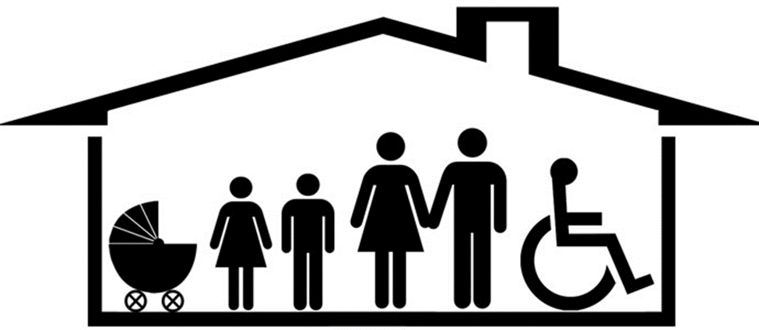
Common Barriers in Traditional Homes
Most traditional homes are full of hidden obstacles that restrict maneuverability for people with disabilities. These challenges become even more pronounced when mobility aids like walkers or wheelchairs are required.
Common architectural barriers include:
-
Steps at entryways with no alternative access
-
Narrow doorways and hallways with tight turns
-
Cramped bathrooms with poor fixture placement
-
Inaccessible outdoor spaces and patios
-
Kitchens that lack clear floor space or proper reach ranges
-
Hard-to-operate door hardware that requires grip strength and coordination
These design flaws can turn an ordinary house into a daily struggle for anyone with mobility limitations.
The Evolution of the Accessible Home
Accessibility has evolved far beyond grab bars and ramps. Modern accessible design is now built into the foundation of the home — seamlessly integrated rather than added as an afterthought.
This shift reflects the growing adoption of Universal Design, a concept that focuses on creating spaces, products, and environments usable by as many people as possible, regardless of age, ability, or circumstance.
Universal Design isn’t about making a home look institutional or medical. It’s about creating beauty, comfort, and functionality that everyone can enjoy — a design approach that feels natural, not clinical.
When done well, Universal Design improves safety and accessibility for every occupant and guest, often in ways that are practically invisible.
Accessible Home Design in Austin, Texas
For those in the Austin area seeking accessibility improvements, T-Square Company offers over 30 years of experience in barrier-free remodeling and accessible home design.
T-Square specializes in customized disability home modifications for residents of all ages, including:
- Expert and professional home assessments
-
Wider doors and hallways
-
Accessible bathrooms and roll-in showers
-
Barrier-free kitchens
-
Ramped entrances and zero-threshold transitions
-
Stair lifts, elevators, and vertical platform lifts
-
Fully accessible rooms designed to each client’s needs
Every design/build project begins with a clear understanding of the client’s abilities and goals, ensuring that the design solutions enhance both independence and comfort.

Meet David L. Traut, CAPS
David L. Traut, CAPS, owner and president of T-Square Company in Austin, Texas, is part of a select group of professionals nationwide who have earned the Certified Aging in Place Specialist (CAPS) designation.
This certification, offered through the National Association of Home Builders (NAHB) in collaboration with AARP, recognizes remodelers and builders trained to meet the unique needs of older adults and individuals with disabilities.
David is also certified in Universal Design in both the United States and Australia. Drawing on decades of expertise, he recently published Age in Place at Home: Adapting the Home Environment for All Generations, a comprehensive guide that explores the role of Universal Design in creating safe, accessible homes. David wrote this book as a means to help families through difficult times once their homes lacked optimal livability.
📘 Age in Place at Home takes readers room by room, explaining practical modifications that enhance safety, accessibility, and independence. The book is available now on Amazon.
Living Comfortably, Safely, and Independently
Never fear — almost any existing home can be modified to overcome accessibility challenges. With proper planning, professional guidance, and a bit of creativity, you can ensure that every family member enjoys comfort, safety, and freedom of movement.
Following the guidance in Age in Place at Home will not only improve your quality of life — it will also promote equality of access for everyone under your roof.
It just makes good sense.
Tags:
aging in place home modifications,
CAPS certified remodeling in Austin,
certified aging in place specialist,
aging in place design in Austin,
7 principles of universal design,
special needs contractor in Austin,
Austin disability contractors for special needs,
Austin aging in place specialist,
disability access contractor,
accessibility home modifications,
Austin home accessibility solutions,
CAPS-certified remodeling in Dripping Springs,
Dripping Springs special needs contractor,
universal design forever homes,
Universal Design for Disabilities,
Barrier-free designs,
Universal Design Building Professional in Austin,
home accessibility modifications,
safe bathroom design for seniors,
how to age in place
Understanding Disability and Home Design
Disability is not simply a medical condition—it’s a complex interaction between a person’s physical abilities, the activities they need to perform, and the built environment surrounding them. The same impairment affects individuals differently: someone who is blind experiences daily life in an entirely different way than someone with deafness or limited mobility.
According to national reports, 19% of Americans between ages 16 and 64, and an even higher 42% of adults 65 and older, live with a physical disability that affects their daily routines. These statistics underscore why aging in place—the ability to remain safely and comfortably in one’s own home—has become such an important priority for individuals and families.
The Home Environment Matters
Disability and accessibility are not issues that affect only older adults. Children and younger adults with special needs face similar challenges when home environments don’t support their independence. To be truly inclusive, the entire building industry—from architects to remodelers—must work together to ensure that every home meets essential needs for comfort, safety, and dignity.
An accessible home should nurture a sense of privacy, belonging, control, and security for all who live there. These are not luxuries—they are vital ingredients of a fulfilling quality of life.
The Problem with Traditional Homes
Most homes are full of hidden barriers that make life harder for people with mobility or sensory limitations. Common challenges include:
-
Steep steps or raised thresholds at entries
-
Narrow doorways and tight hallways with abrupt turns
-
Cramped bathrooms that limit fixture access
-
Inaccessible kitchens and outdoor spaces
-
Door hardware and cabinetry that demand grip strength and coordination
Once a mobility device like a wheelchair or walker enters the picture, these limitations become magnified. What once felt “normal” suddenly becomes restrictive, unsafe, or impossible.
The Rise of Universal Design
Fortunately, accessible home design has evolved far beyond grab bars and ramps. The modern standard—Universal Design—focuses on creating spaces, products, and environments that are usable by as many people as possible, regardless of age or ability, without the need for later adaptations.
Universal Design is built right into the foundation of a space. When applied well, it feels natural and attractive—offering safety, flexibility, and ease without looking “institutional.” It’s the design philosophy that lets people live comfortably, age gracefully, and welcome everyone.
Accessibility Solutions in Austin, Texas
For those seeking increased accessibility in Central Texas, T-Square Company provides professional guidance and expert craftsmanship. With over 30 years of experience, we specialize in handicap-accessible homes and barrier-free remodeling, tailoring every project to the client’s specific needs.
Our accessibility services include:
-
Wider entries and hallways
-
Accessible bathrooms and roll-in showers
-
Kitchen redesigns for reach and comfort
-
Ramped or level entries
-
Vertical platform lifts, stair lifts, and elevators
-
Fully accessible bedroom or living spaces
Every home modification is uniquely designed to match the resident’s physical abilities, routines, and goals—because true accessibility is personal.

About David L. Traut, CAPS
David L. Traut, owner and president of T-Square Company in Austin, is a Certified Aging in Place Specialist (CAPS) and a Universal Design professional certified in both the United States and Australia. He is part of a select group of remodelers nationwide with the expertise to create homes that adapt to their occupants’ changing needs.
David’s lifelong commitment to inclusive, barrier-free living inspired his book,
Age in Place at Home: Adapting the Home Environment for All Generations,
which explores Universal Design principles and guides readers room by room toward creating a safe, functional, and beautiful home for every stage of life.
Moving Forward: A Home for Every Ability
The good news is that almost any home can be adapted with proper planning and know-how. When you design with accessibility in mind, you’re investing not only in convenience but in peace of mind, safety, and family togetherness.
Your quality of life—and that of your loved ones—will improve when every family member enjoys equal access and independence throughout the home.
It just makes good sense.
📘 Explore More
Age in Place at Home: Adapting the Home Environment for All Generations
Available now in paperback, eBook, and very soon audiobook formats on Amazon, Audible, and iTunes.
Tags:
aging in place home modifications,
CAPS certified remodeling in Austin,
ADA compliance,
aging in place construction,
Austin Handicap Remodeling,
7 principles of universal design,
Austin Senior Home Remodeling,
Austin aging in place specialist,
Austin home remodeling for disabled,
accessible home modifications,
Age in Place at Home,
Disability Remodeling Services in Austin, Texas,
ADA Accessibility,
ADA Contractor/Austin, Texas,
CAPS-certified remodeling in Dripping Springs,
Dripping Springs senior home remodeling,
Universal design construction in Austin
Are You And Your Family Prepared For The Future?
The sudden onset of a disability can significantly impact a family's daily lifestyle in various ways:
- Changes in caregiving responsibilities: Family members may need to take on caregiving roles to support the disabled individual, which can require time and adjustments to daily routines.
- Financial considerations: The cost of medical expenses, assistive devices, and home modifications can strain a family's finances.
- Mobility and transportation: Depending on the disability, transportation options may need to be adapted, which can affect school, work, and social activities.
- Home modifications: The need for wheelchair ramps, accessible bathrooms, and other modifications may be necessary, impacting the home environment.
- Emotional and psychological impact: Family members may experience stress, emotional strain, or guilt as they adapt to the new circumstances.
- Social life: The family's ability to participate in social events and outings may change due to the disabled family member's needs.
- Education and employment: Family members may need to adjust their work or school schedules to accommodate caregiving responsibilities.
- Healthcare management: Coordinating medical appointments, therapies, and medications becomes a part of the daily routine.
- Community support: Families may seek support from local disability organizations or support groups to help navigate these changes.
- Recreation and leisure: Finding accessible recreational activities can be a challenge, impacting the family's leisure time.
It is essential for families, prior to facing such life challenges, to take proactive measures toward universally preparing their inaccessible home for future evolving personal needs. Therefore, all periodic home remodels should include elements of Universal Design in every area of your home. This positive action will alleviate or lessen the affects of many of the sudden impactful changes brought about in the aforementioned list. The family should also communicate openly, seek external support, and work together to adapt to the new lifestyle and ensure the well-being of all members.
The constantly evolving concept known as Universal Design for home building and remodeling is catching on nationwide and has been for several years as a sign of the times. Universal design in housing refers to the concept of designing living spaces and homes to be accessible and usable by people of all ages, abilities, and backgrounds. The goal is to create environments that accommodate a wide range of individual needs and preferences without the need for costly or specialized modifications. Universal Design techniques used in building or remodeling makes a home more accessible to all regardless of their mobility or adaptive abilities and at any age.
An evolution of new products used for disability home modifications is making Universal Design homes more accessible and has finally come about in the remodeling industry. These new advances in accessible home remodeling not only keep the living environments safer but will not compromise the home's aesthetics or resale value. Furthermore, this new way of thinking offers flexibility to add accessories now and later to those planning ahead or to the end user. It also provides for a wide range of human performance characteristics for the way people use spaces within their homes including well integrated usability features.
There are seven criteria which must be met to be considered a Universal Design no matter which area of the home you are referring to. Any design must be equally useful to everyone, have flexibility in usefulness, be simple and intuitive, be perceived by everyone, have a tolerance for error, require little physical effort, and it must maintain an adequate area for approach and use. Any complexity or discriminating attribute to a design will doom it in terms of being considered universal in nature.
Universal Design Is Inclusive Design For All!
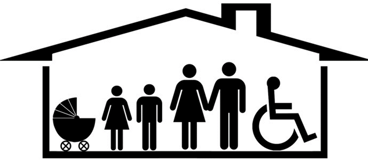
Universal design aims to create inclusive living environments that promote independence and quality of life for everyone, including individuals with disabilities, older adults, and families with young children. It's an important concept for promoting accessibility and social inclusion in housing design.
While Universal Design is a human centered concept making up an overlapping design philosophy, this concept of design came about by the recent disability movement of our aging population and the quality of life created by an increased user concept. An evolution in building ideas which deals with a larger all-inclusive society rather than a select group will make our homes more livable and sustainable in the future. Small changes can make a great difference with practice and understanding of the antiquated architecture which has evolved as the norm. It has been demonstrated that a need for functionality and usability has been lacking within our existing home inventory and the standards and codes from our municipalities must catch up with the needs of our society as a whole. When everyone can benefit it just makes common sense. Observing other aging groups in our society and the personal perils they face has finally brought about a new way of thinking about the living environment. Universal Design is beneficial to all abilities and ages offering practical solutions for specific differences in people. We have long needed a new vision representing a home that works for everyone and this attitude is becoming the new reality stemming from a revolution. This new building revolution, using Universal Design, is helping to create new accessible homes along with ways to make the older homes more accessible.

Universal Design does not equate to accessibility design even though they both are concerned with ergonomics and human function issues. The ADA guidelines for accessibility were created as a means to help those people with extreme disabilities within our society who are a narrow and specific cross section of the masses. A Universal Design approach proactively takes into account moderate impairments or disabilities, temporary health conditions, and the varying abilities of anyone within a home regardless of their age or size. In other words, an ADA accessible home is designed for the one person exhibiting a disability, whereas a Universal Design home is designed for everyone and avoids kneejerk reactions to later seen health issues. Features like one story design, bedrooms and bathrooms on the ground floor, natural day lighting through larger windows and skylights, and wider doors and hallways appeal to users of all ages. With baby boomers eyeing a future where they'll Age in Place and younger people renovating older homes, the Harvard Joint Center for Housing Studies is anticipating healthy growth for the U.S. home improvement market through 2025.
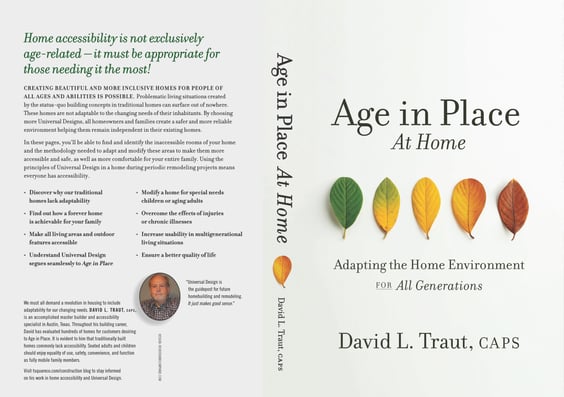
T-Square Company in Austin, Texas has been offering design/build accessibility projects to their clients incorporating the principles of Universal Design for over twenty-five years. We specialize in Universal Design Ideas. David L. Traut, CAPS, the owner-president of T-Square Company is certified in Universal Design. He has published a book entitled "Age in Place at Home :Adapting the Home Environment for All Generations" which is available through Amazon. The book covers identifying and overcoming common accessibility shortcomings within a traditional home. Within it's pages, David takes you through a home interior showing you how and where to apply Universal Design aspects in every room. Since Universal Design seamlessly segues into Aging in Place needs, it is a how-to book worth reading. Incorporating Universal Design principles into your home facilitate future Aging in Place goals, while comfortably addressing the diverse needs of all ages and mobility levels living within your home at any time. This book is a great reference for aging homeowners, parents of special needs children, homeowners moving in their elderly parents, and multi-generational living situations. Always remember, home accessibility is not exclusively age-related, but it must be appropriate for those needing it the most.

Tags:
aging in place remodeling,
wheelchair accessible remodeling,
CAPS certification holder in Austin,
aging in place design,,
accessibility designs Austin Texas,
universal design/build ideas,
Austin Accessibility Design,
Austin accessible home remodeling,
aging in place specialist in Austin,
age in place home design,
why is aging in place important,
universal designbuilding for the future,
why is universal design important,
7 principles of universal design,
Austin disability contractors for special needs,
Austin aging in place specialist,
accessible homes,
universal design/build contractor,
wheelchair accessible housing,
accessible home builder in Austin,
universal home design in Austin,
Austin home accessibility solutions,
Austin home modification services,
Dripping Springs aging in place specialist,
Universal design construction,
Universal Design for Disabilities
If you have made a decision, along with the support of your family, to remain in your existing home while you Age in Place, you must determine a definite pathway forward to ensure your desires are successfully met. This is a sign of the times as today over 80% of homeowners share your desire to remain in their familiar home, surrounded by familiar surroundings and neighbors. Amongst any caregivers involved in your life, you will also need to obtain help from a trained and seasoned Certified Aging in Place Specialist.
Fortunately, construction and design professionals are taking advantage of the CAPS training across the nation. This designation is taught through the National Association of Home Builders in collaboration with AARP. CAPS connects responsible professionals with home owners who need these services on an ever-increasing basis. CAPS stands for Certified Aging in Place Specialist. It is a construction credential that has builders, architects, remodelers, designers and even occupational therapists buzzing. Aging in Place principles are changes designed to custom fit your existing home to you and your family's needs as time goes by. CAPS design takes your current and future circumstances into consideration and the principles focus on elegant, aesthetically enriching, barrier-free environments. Home modifications do not need to look institutional and this is why many seniors are resisting the very changes that can help them the most. Be aware, the vast majority of uncertified builders and remodelers do not have the knowledge and training to perform home modifications for Aging in Place. Take for instance when you are considering installing a grab bar, which seems like a simple endeavor, understand that a run of the mill contractor or handyman has no idea of the safety regulations involved or the knowledge concerning where and how to install the grab bar. This leaves the consumer in an unsafe predicament. However, if performed correctly, any modifications will actually increase the value of your home because they appeal to multiple generations of home buyers.
David L. Traut, CAPS the owner of T-Square Company in Austin, Texas is one of the select group of professionals to earn the Certified Aging In Place Specialist (CAPS) designation, identifying him as a home remodeler and builder with the skills and knowledge necessary to remodel or modify a home to meet the unique needs of the older population, disabled owners, or their visitors. T-Square Company offers a full compliment of Aging in Place services for their clientele. These services include the initial home assessment, a design followed by a detailed drawing, all city permits and fees, and the construction or remodeling work involved. David has been successfully operating as a CAPS professional for nearly thirty years while performing his design/build projects. His clients include many members of the private sector, the VA, and HUD. David is a CAPS certified remodeler and master builder providing a one-stop-shop which is even more valuable to anyone wanting to Age in Place. As a master craftsman, his construction knowledge enables any Aging in Place design to come to fruition via practicality and best practices.

David always practices what he preaches to his clients. He takes an inductive qualitative research approach with every client, because everyone has diverse physical needs. As an answer to his clients requests over the years, he has recently published a book entitled "Age in Place at Home: Adapting the Home Environment for All Generations". The book reflects on thirty years of accessibility improvements and identifies why our traditional homes specifically lack this very basic need. It is available on Amazon and stands as a reference book for increasing home accessibility using the principles of Universal Design in every room of the home. David is certified in the United States and Australia in the Universal Design process. Universal Design elements can be installed into a home at any time avoiding the need for reactive remodeling following a health crisis. This thoughtful proactive design process segues seamlessly into what is required for Aging in Place. Furthermore, Universal Design prevents the need to perform future modifications except under extreme circumstances. The presence of Universal Design provides access for both wheelchairs and walkers and perhaps avoids future injuries because you have accessibility.

For additional information about the CAPS program, visit nahb.org/CAPS. For more information about T-Square Company, visit www.tsquareco.com or call 512-444-0097 to schedule a home assessment by a local Austin CAPS professional.
So, just exactly what takes place once you schedule a home assessment? During the home assessment for increasing accessibility, the structural changes needed for the client will be noted and documented through sketches, photos, and conversation. CAPS professionals are generally paid by the hour or receive a flat fee per initial visit or project because they are offering a service backed by education and experience. Typically an assessment takes approximately 60-90 minutes. It’s best if you or a family member can accompany the CAPS professional during the home safety assessment, as you or they can ask questions about specific safety items as they come up. The comprehensive Home Safety Assessment determines a direct and safe path forward for you, the client. You will have a better chance of avoiding the high cost and physical disruptions of future injuries leading to assisted living. All the surroundings within your home will be taken into account from the flooring to the layout of a specific room or location as it pertains to the your ease of use. Your physical and emotional needs also come into play because of mobility, sensory, or cognitive concerns. The goal is to modify the home in a custom manner to provide for your maximum health, independence, and safety. Often the input from any caretakers like a physical or occupational therapist during the assessment phase can prove to be invaluable. The three main rooms involved in Aging in Place home modifications are the bathroom, the kitchen, and the family room in that order. The basic needs involve access through wider doorways, level non-slip floor surfaces, and lower cabinets with plumbing fixture accessibility like roll-under sinks with easily operated lever controls.
Aging in Place Bathroom Modifications in Austin
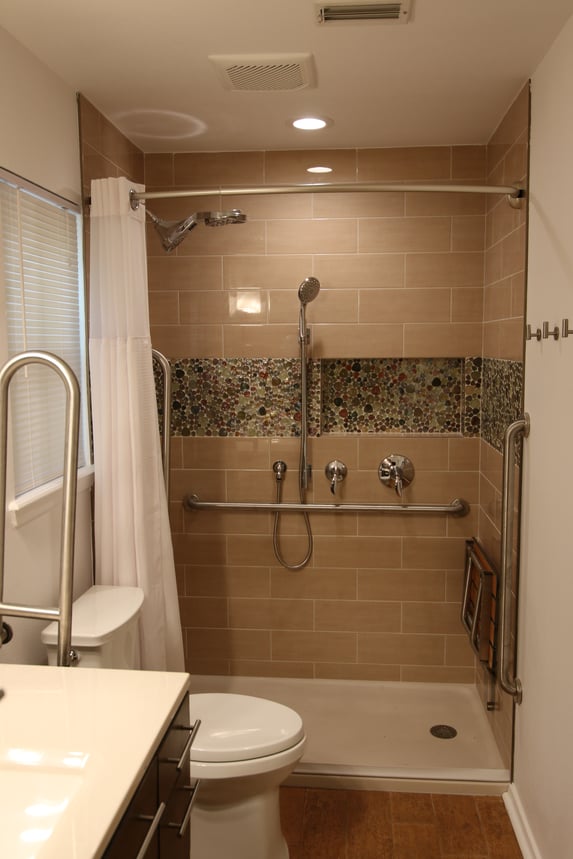
Quite often it is the home that presents the greatest difficulties for homeowners accompanied by limited mobility or other physical impairments as they age in their existing surroundings. Designing for specific physical conditions will lessen the impact of arthritis, restricted mobility, or loss of vision by using combinations of products, concepts, and techniques available today. Keeping safety in mind, interior modifications commonly include adding grab bars or handrails throughout the home, installing ramps or vertical platform lifts, lowering upper cabinets and countertops to Universal Design heights, adding non-slip flooring, widening hallways or installing stairlifts, and widening doors. You might also consider lowering light switches and thermostats and installing easier-to-use door levers or electric door openers. Try to provide a clear barrier-free path or accessible route to the most visited areas of your home like a disability access bath containing a roll-in ADA compatible shower, the kitchen, and the family room.

Tags:
barrier free access,
CAPS certification,
CAPS certified remodeling in Austin,
aging in place construction,
CAPS remodeling techniques,
disability home remodeling in Austin,
aging in place services,
aging in place design,,
elder construction,
certified aging in place specialist,
Austin elder construction,
handicap home modifications for disabled,
handicap remodeling contractors,
roll in showers,
handicap bathrooms,
universal design/build,
Austin Accessibility Design,
Austin senior living solutions,
Austin accessible home remodeling,
certified aging in place consultant in Austin,
bathroom modifications for disabled in Austin, TX,
aging in place specialist in Austin,
senior aging in place services,
home modifications for children with disabilities,
what does it mean to age in place,
aging in place home remodeling,
home remodeling for disabled in Austin Texas,
wheelchair accessible home remodeling in Austin,
austin texas wheelchair accessible showers,
home remodeling for seniors Austin,
Austin Senior Home Remodeling,
remodeling for elders in Austin,
disability and special needs contractor Austin,
bathrooms with disability access in Austin, Texas,
Austin disability contractors for special needs,
Austin handicap bathroom contractor,
handicap accessible remodeling,
barrier free remodeling,
handicap accessible bathroom remodeling,
handicap accessible home renovations,
handicap accessible home modifications,
disability remodeling,
handicap accessible bathroom remodel,
Austin aging in place specialist,
what is aging in place,
Age in Place at Home,
Disability Remodeling Services in Austin, Texas,
disability and special needs contractors in Austin,
universal design and accessibility in Austin,
Barrier-free designs,
forever home,
home accessibility help
Most recently, architects and designers, with the help of CAPS professionals, have been concentrating on revising home interior design basics. The obvious outcome is slowly we are creating design principles and strategies that accommodate the full range of human capability rather than only the fully-functional part of society. This field of flexible or inclusive design is called Universal Design and its goal is to create easily accessible living and working spaces without exclusion to anyone. Instead of appearing as a hospital extension, the thoughtful new designs are appealing, stylish and comfortable for everyone; not just the elder or severely disabled among us. Therefore, the world of boundaries and barricades is beginning to lessen while we overcome the nationwide problem one home at a time. This is a testament to the senior and disabled population demanding equal access to their homes.
The ADA rules came about in 1990, but unfortunately the ADA rules do not apply to the private residential market. However, these rules can be used as a guide for better accessibility in private homes. Seniors and disabled homeowners must depend on the knowledgeable CAPS certified private sector of builders and remodelers to remedy the housing shortcomings. They will supply the recommended aging in place home modifications. Universally, every home should be accessible to all inhabitants and their visitors regardless of their age, size, or physical abilities. Caring for someone with special needs is a unique and sometimes lifelong challenge. Whether it’s a child born with a disability, someone who has suffered an unfortunate accident or medical event causing them to lose abilities they once had, or an older family member in declining health needing assistance with daily life, the work of a special needs contractor can help make things easier for both the affected individual and their caregivers.
Accessible Bathroom Modifications In Austin
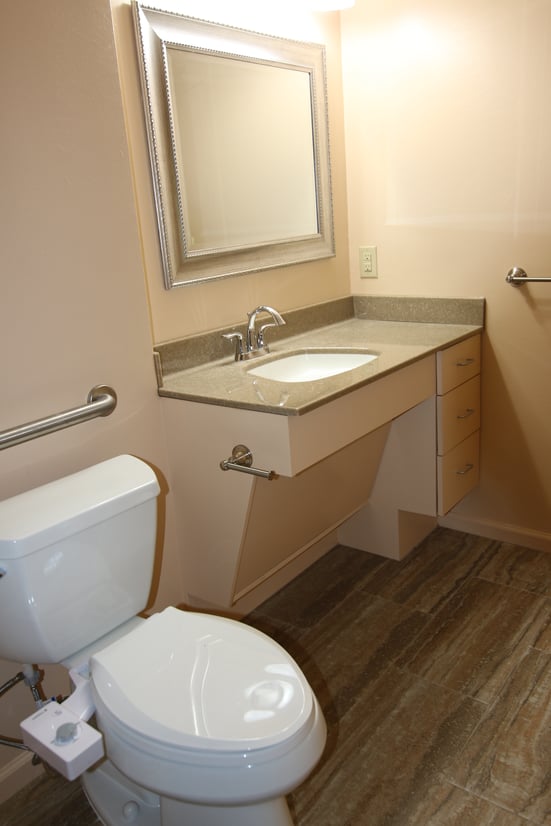
What are the most important home modifications for seniors and the disabled to increase their quality of life? Here is a list of considerations for Aging in Place.
- Replacing door knobs with lever devices.
- Widening doorways and hallways.
- Increasing lighting, especially around stairs and work areas.
- Installing curb-less showers.
- Installing grab bars, especially in wet areas.
- Installing taller comfort-height toilets.
- Installing ramps to overcome level changes.
- Installing lever-controlled faucets.
- Installing hand-held shower devices.
- Adding a shower bench.
- Replacing flooring with any non-skid type.
- Utilizing smart home devices like electric door openers and remote light switches.
- Undergoing kitchen modifications to increase comfort and safety.
- Making bathroom modifications to increase safety and usability.
- Installing a stair lift or vertical platform lift.
T- Square Company located at 14141 Highway 290 West, Suite 800 in Austin, Texas is an industry leading accessible, universal, certified Aging in Place and VA approved Specially Adapted Housing home builder and remodeler. T-Square offers design/build projects for both totally accessible homes from the ground up or complete handicap modifications for existing homes to Age in Place. Be aware, traditional home builders and remodelers do not consider or understand the needs of the disabled or elderly. They deal mainly with the two thirds of our society without disabilities or special needs. They do not have the knowledge or experience required to think out of the box when creating a special needs home. It requires a trained and educated accessible home builder or contractor to visualize special needs modifications for special people.

T-Square Company will design and build you an adapted living environment which is completely customized around your abilities. Whether your project concerns home modifications, an accessible addition or wing, or new construction derived from a handicap accessible floor plan they can help you increase your accessibility. David Traut, the president/owner, is CAPS certified (1636580) and has over three decades of building and remodeling experience practicing as a disability contractor for special needs. He wants to help his clients be as self sufficient and independent as possible. Let David show you how to increase the safety and accessibility within your personal living environment.
By the way, David has recently published a book entitled "Age in Place at Home: Adapting the Home Environment for All Generations". It is available on Amazon and stands as a reference book for increasing home accessibility through Universal Design.

Contact T-Square Company today at 512-444-0097 so we can show you how to begin a new accessible chapter in your lifetime.
Tags:
aging in place home modifications,
accessibility home remodeling in Austin,
aging in place specialist,
aging in place services,
Austin Senior Home Remodeling,
handicap accessible bathroom remodeling,
Austin aging in place specialist,
handicap bathroom remodel,
accessible home remodeling for disabilities,
barrier free showers in Austin,
ADA compliant roll in showers,
handicap ADA roll in shower,
wheelchair accessible shower stalls,
accessible bathroom design specifications,
home remodeling contractors residential,
disabled bathroom remodel,
specialty construction in Austin,
what is an ADA compliant bathroom,
home access in Austin,
home accessibility,
wheelchair accessible housing,
accessible homes in austin,
accessible home modifications,
wheelchair accessible bathroom,
handicap bathroom design,
handicap bathroom vanity,
handicap bathroom contractor in Austin,
handicap accessible floor plans,
accessible home builder in Austin,
special needs contractor,
universal home design in Austin,
home renovations for disability in Austin,
ADA Accessibility,
ADA Contractor/Austin, Texas,
Barrier-free designs
The concept of successful and independent aging has become increasingly important, while senior citizens dominate the population. An active independent engagement in life through participation in social and productive activities is a very important aspect of successful aging. However, the built environment oftentimes directly interferes with the successful engagements of older adults once their individual needs change. Therefore, it is necessary to provide modified living environments designed to suit the needs of aging adults. This is the essence of the Aging in Place market of today.
What can be done to solve this inevitable housing dilemma facing the growing number of aging Americans? Of all the design theories that attempt to accommodate the aging process, Universal Design is the most desirable option as it provides built environments that benefit everyone, regardless of their age, size, or ability. Universal Design is a promising voluntary philosophy that requires increased attention from designers and builders participating in Aging in Place. Taken as a whole, it is evident that the application of Universal Design to the home environment is a positive step toward successful aging and living for anyone. In fact, the principles of Universal Design segues directly into what is required for Aging in Place.
A Wheelchair Accessible Kitchen Incorporating Universal Design Principles
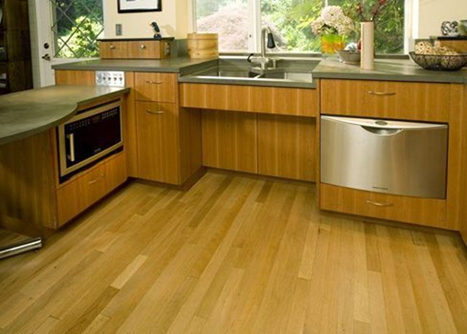
Our existing architecture does not lend itself well to accomplishing any simple Aging in Place home remodels. In fact, there are more inaccessible homes in all of the US than there are accessible homes and 45% of these existing traditional homes are owned by baby boomers. What is more, the baby boomer group represents the largest and oldest group of homeowners. This particular aging group desires to live in their existing home around familiar surroundings as they Age in Place. But what if, for some reason, a home that was once sufficient for all family members becomes no longer accessible. This involves the need for a certified CAPS professional.
Unfortunately, in most traditional residential US properties, there are commonly no easy ways to enter the home proceeding into bathrooms or utilizing kitchens without coming into contact with one architectural barrier or another-especially if a wheelchair or walker is being used to help with mobility issues. While an estimated 80% of aging homeowners have a firm plan to Age in Place, every mobility device requires the proper clearance and distance along a customized accessible route within the home to function properly. This comfortable route is identified during wheelchair remodeling projects.

The National Association of Home Builders, in partnership with the AARP and Home Innovation Research Labs, created the CAPS program, which includes training and education on the technical, business management and customer service skills essential to compete in the fastest growing segment of the residential remodeling industry--home modifications for aging in place. David L. Traut, CAPS the President and owner of T-Square Company in Austin, Texas is one of the select group of professionals nationwide to earn the Certified Aging-In-Place Specialist (CAPS) designation, identifying him as a home remodeler and builder with the skills and knowledge necessary to remodel or modify a home to meet the unique needs of the older population, disabled owners, or their visitors. T-Square Company offers complete services concerning disability renovations beginning with their design/build philosophy. Furthermore, David is certified in Universal Design in the United States and Australia. Call them today at 512-444-0097 to set up a professional assessment of your living situation.

After over a year of writing to fulfill his customers' requests, David's new book, "Age in Place At Home," is available for purchase from Amazon. Go to the link below to order his knowledgeable paperback book, which was released in late November, 2022. It provides a great guideline for using the principles of Universal Design in new home construction and/or remodeling for every room in your home. Get your copy today.
https://www.amazon.com/gp/r.html?C=2Z24ENUUAEWUK&K=13Y7YU7PKKYAC&M=urn:rtn:msg:20221010201802eb9acb7b24004a4785cd2ec1d4f0p0na&R=3R6MK9WDXJPH7&T=C&U=http%3A%2F%2Fwww.amazon.com%2Fdp%2FB0BHTV28RV%3Fref_%3Dpe_3052080_276849420&H=7FWEPMGCH0TT8LN6SKPMUOCVJNYA&ref_=pe_3052080_276849420
Tags:
wheelchair accessible remodeling,
ADA remodeling,
ADA compliance,
Austin Accessibility Design,
Austin accessible home remodeling,
senior aging in place services,
universal design building for a lifetime,
what is universal design,
universal principles of design,
Austin Senior Home Remodeling,
senior home modifications in Austin,
Austin disability contractors for special needs,
Austin aging in place specialist,
veterans home accessibility help in Austin, Texas,
what is aging in place,
wheelchair accessible homes,
Austin home accessibility solutions,
ADA Accessibility,
home accessibility services,
forever home,
sustainable living design
When families are suddenly thrust into caring for an ill or injured family member, knowing how to make their homes accessible, barrier-free and safe can be challenging, especially when it involves an aging parent. A professional CAPS-certified remodeler is needed to offer guidance and solutions to the discovered family problems. Aging in Place is not for everyone, but as increasingly older Americans choose to Age in Place and remain in their homes, issues related to maintaining mobility, promoting home safety, and creating an environment to meet care needs are becoming increasingly crucial to caregivers and care recipients, along with the building community. Even savvy and experienced families may have trouble figuring out whom to call for a roll-in shower or door widening. According to the AARP, nearly 90% of older adults want to Age in Place and maintain independence however, 85% have done nothing about it. Many retirees want to stay in their own houses for as long as possible. But being able to do so will depend on how easy it is to maneuver your home as you age. Research by the Centers for Disease Control and Prevention shows that Aging in Place home modifications may prevent up to 50% of home accidents among seniors in older homes, including falls. T-Square Company is a certified disability access contractor in Austin, Texas, doing accessibility jobs for the VA, HUD, and the private sector for nearly thirty years. T-Square Company offers a complete line of Aging in Place services using their design/build approach. T-Square Company's Aging in Place services incorporate the principles of Universal Design to better accommodate wheelchair users or people with varying disabilities, making the home environment more comfortable for all generations with or without specific needs.

The National Association of Home Builders, in partnership with the AARP and Home Innovation Research Labs, created the CAPS program, which includes training and education on the technical, business management, and customer service skills essential to compete in the fastest-growing segment of the residential remodeling industry--home modifications for Aging in Place. David L. Traut, CAPS, the owner of T-Square Company in SW Austin, Texas as a handicap remodeling contractor, is one of the select group of professionals nationwide to earn the Certified Aging-In-Place Specialist (CAPS) designation, identifying him as a home remodeler and builder with the skills, training, and knowledge necessary to design and remodel or modify a home to meet the unique needs of the older population, disabled owners, or their visitors. David is certified in Universal Design in the United States and Australia. He has recently published a book entitled "Age In Place At Home: Adapting the Home Environment For All Generations". It is available through Amazon. It acts as a guidepost for accomplishing better accessibility throughout the home. He takes you room by room showing you how you can make your home inclusive to everyone living there and for all visitors.

ADA-Compliant Kitchens
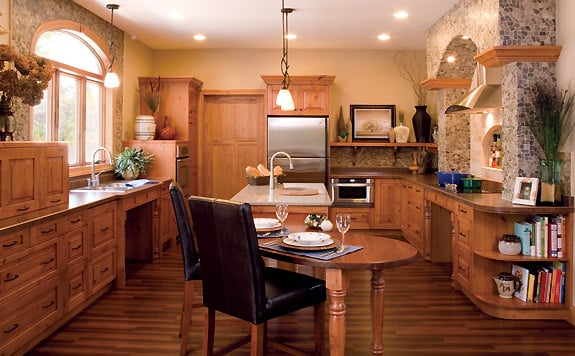
People interested in Aging in Place services and Aging in Place home improvements are generally looking for a level entry into their home along with the clear maneuverability that a more open floor plan with more extraordinary clear unobstructed floor space presents. They desire flat floors without transitions requiring steps or stairs to move around. Ramps having a correct 1:12 slope or less can be used to get them up to the level floor space at the exterior entries or the garage entrance. ADA-compliant kitchen cabinets and ADA bathroom cabinets will more than likely come into play to complete any accessible home remodeling project. Aging in Place services and home modifications should include adding non-slip flooring, widening hallways or installing stair lifts, and widening doors. You might consider lowering light switches and thermostats and installing easier-to-use lever door hardware. To provide safety and independence, many considerations for an Aging in Place design should be considered. Provide a clear barrier-free path or accessible route to the most visited areas of the home, as the ADA recommends. The three areas needing improvement for a person wanting to age in place include the bathroom, the kitchen, and the family area in order of importance. The goal of an accessible design in Austin is to make the areas in the home a safe space for everyone who uses the facilities, regardless of age, size, or ability.

For additional information about the CAPS program, visit nahb.org/CAPS. For more information about T-Square Company, visit www.tsquareco.com or call 512-444-0097 to schedule a home assessment by a CAPS professional.
Tags:
barrier free access,
aging in place remodeling,
aging in place home modifications,
ADA remodeling,
ADA bathroom cabinets,
aging in place remodels,
ADA kitchen cabinets,
aging in place construction,
aging in place designs,
accessibility home remodeling in Austin,
CAPS professional in Austin,
CAPS certification holder in Austin,
CAPS remodeling techniques,
disability bathroom remodeling in Austin,
bathroom modifications for elderly,
aging in place specialist,
aging in place services,
aging in place design,,
elder construction,
certified aging in place specialist,
handicap remodeling contractors in Austin,
independent living in Austin Texas,
aging in place specialist in Austin,
senior aging in place services,
Austin aging in place specialist,
barrier free design,
Age in Place at Home,
Professional Disability Remodeling Contractor,
aging in place services for seniors in Austin
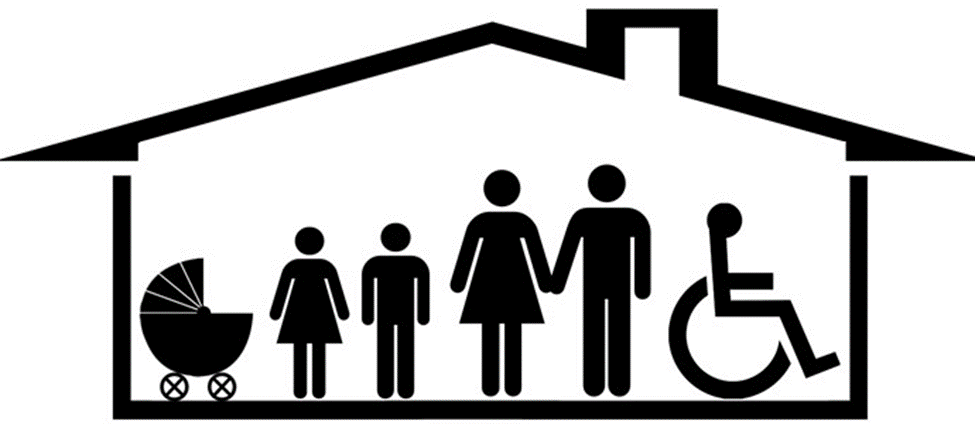
While Universal Design is a human centered concept making up an overlapping design philosophy, this concept of design came about by the recent disability movement of our aging population and the quality of life created by an increased user concept. An evolution in building ideas which deals with a larger all-inclusive society rather than a select group will make our homes more livable and sustainable in the future. Small changes can make a great difference with practice and understanding of the antiquated architecture which has evolved as the norm. It has been demonstrated that a need for functionality and usability has been lacking within our existing home inventory and the standards and codes from our municipalities must catch up with the needs of our society as a whole. When everyone can benefit it just makes common sense. Observing other aging groups in our society and the personal perils they face has finally brought about a new way of thinking about the living environment. Universal Design is beneficial to all abilities and ages offering practical solutions for specific differences in people. We have long needed a new vision representing a home that works for everyone and this attitude is becoming the new reality stemming from a revolution. This new building revolution, using Universal Design, is helping to create new accessible homes along with ways to make the older homes more accessible.
There are seven criteria which must be met to be considered a Universal Design no matter which area of the home you are referring to. Any design must be equally useful to everyone, have flexibility in usefulness, be simple and intuitive, be perceived by everyone, have a tolerance for error, require little physical effort, and it must maintain an adequate area for approach and use. Any complexity or discriminating attribute to a design will doom it in terms of being considered universal in nature.
The new (but old) evolving concept known as Universal Design for home building and remodeling is catching on nationwide and has been for several years as a sign of the times. Universal Design techniques used in building or remodeling makes a home more accessible to all regardless of their mobility or adaptive abilities and at any age. An evolution of new products used for disability home modifications is making those homes more accessible and has finally come about in the remodeling industry. These new advances in accessible home remodeling not only keep the living environments safer but will not compromise the home's aesthetics or resale value. Furthermore, this new way of thinking offers flexibility to add accessories now and later to those planning ahead or to the end user. It also provides for a wide range of human performance characteristics for the way people use spaces within their homes including well integrated usability features.

Universal Design does not equate to accessibility design even though they both are concerned with ergonomics and human function issues. The ADA guidelines for accessibility were created as a means to help those people with extreme disabilities within our society who are a narrow and specific cross section of the masses. A Universal Design approach broadly takes into account moderate impairments or disabilities, temporary health conditions, and the varying abilities of anyone within a home regardless of their age or size. In other words, an ADA accessible home would be designed for the one person with the disability whereas a Universal Design home is designed for everyone. Features like one story design, bedrooms and bathrooms on the ground floor, natural day lighting through larger windows and skylights, and wider doors and hallways appeal to users of all ages. With baby boomers eyeing a future where they'll Age in Place and younger people renovating older homes, the Harvard Joint Center for Housing Studies is anticipating healthy growth for the U.S. home improvement market through 2025.
T-Square Company in Austin, Texas has been offering design/build accessibility projects to their clients incorporating the principles of Universal Design for over twenty-five years. David L. Traut, CAPS, the owner-president of T-Square Company is certified in Universal Design. He has published a book entitled "Age in Place at Home :Adapting the Home Environment for All Generations" which is available through Amazon. It covers identifying and overcoming common accessibility shortcomings within a home. Within it's pages, he takes you through a home interior showing you how to apply Universal Design aspects in every room. Since Universal Design seamlessly segues into Aging in Place needs, it is a book worth reading. Incorporating Universal Design principles into your home facilitate future Aging in Place goals, while comfortably addressing the diverse needs of all ages and mobility levels living within your home at any time. It is a great reference book for parents of special needs children, homeowners moving in their elderly parents, and multi-generational living situations. Always remember, home accessibility is not exclusively age-related, but it must be appropriate for those needing it the most.

Tags:
aging in place remodeling,
wheelchair accessible remodeling,
CAPS certification holder in Austin,
aging in place design,,
accessibility designs Austin Texas,
universal design/build ideas,
Austin Accessibility Design,
Austin accessible home remodeling,
aging in place specialist in Austin,
age in place home design,
why is aging in place important,
universal designbuilding for the future,
why is universal design important,
7 principles of universal design,
Austin disability contractors for special needs,
Austin aging in place specialist,
accessible homes,
universal design/build contractor,
wheelchair accessible housing,
accessible home builder in Austin,
universal home design in Austin,
Austin home accessibility solutions,
Austin home modification services,
Dripping Springs aging in place specialist,
Universal design construction,
Universal Design for Disabilities
Millions of Americans are living longer and have more active lives. While this group is embracing newly found and changing lifestyles, a need to revitalize their home environments has come about. Identifying this major opportunity while developing the skills to interact with those needful homeowners has created a new type of elder remodeling. A certified aging-in-place specialist or CAPS home remodeler has completed the coursework and training in how to help keep existing homeowners in their homes longer. They will be listed in a national directory compiled by the NAHB in Washington. The CAPS certificate holders act as ADA Contractors utilizing the ADA published rules. Their final accessible designs involve the ADA handbook as a guide but are not strictly held to all the ADA standards and regulations because they are funded with private monies. However, accessible CAPS designs are customized around the client's abilities.
The National Association of Home Builders, in partnership with the AARP and Home Innovation Research Labs, created the CAPS program, which includes training and education on the technical, business management, and customer service skills essential to compete in the fastest-growing segment of the residential remodeling industry--home modifications for aging in place and ADA accessibility in Austin, Texas. David L. Traut, CAPS the owner of T-Square Company in Austin, Texas is one of the select group of professionals nationwide to earn the Certified Aging-In-Place Specialist (CAPS) designation, identifying him as a home remodeler and builder with the skills and knowledge necessary to remodel or modify a home to meet the unique needs of the older population, disabled owners, or their visitors. T-Square Company is an ADA contractor in Austin, Texas abiding by the published ADA rules for their extremely disabled clients.
There are three categories of aging-in-place customers. Those who are simply and wisely planning ahead for their futures to remain in their present homes. The second category concerns those people who know they have a chronic medical disorder and need to prepare in advance for accessibility issues that will come as a result of their disease. People with diseases that are constantly causing increased physical or mental changes to their being are a good representative of this second group. The third group involves those people who either have had a chronic problem that has progressed severely altering their mobility or those who have sustained a life-altering tragedy such as being involved in an accident. All of these groups will drive the future metamorphosis of existing inaccessible dwellings requiring bathrooms with disability access. The goal of an Austin ADA compliant remodel or an accessible bathroom design is to make the bathroom a safe space for everyone who uses the facilities. Aging in place services use design techniques to accommodate wheelchair users and can make the bathroom more comfortable for all generations with or without specific needs. It is important to carefully outline the scope of work during the remodeling of an accessible bathroom by first taking inventory of the user's capabilities, needs, and preferences. All disability home remodeling or disability bath remodels in Austin must be done considering all the data provided by the client, his or her family, and any caretakers involved. CAPS certified remodeling and aging in place design must be carried out by aging in place specialists and residential remodeling professionals.

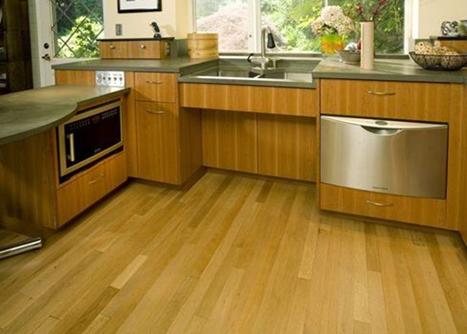

Many people find themselves needing accessible homes for themselves or family members. There are approximately 30 million Americans using wheelchairs and the number of people who need accessible homes will continue to increase as disabled and aging people are finding more ways to remain living in their homes. One important way to increase independent living is making a home accessible to any individual personal needs. Home modifications can increase safety, accessibility, and independence for people who want to live independently.
The three main rooms involved in aging in place home modifications are the bathroom, the kitchen, and the family room in that order. These areas make up the most occupied spaces of any home and will be connected by a designated accessible route. Here we will need access through wider doorways, non-slip floor surfaces, and adequate cabinet and plumbing fixture accessibility. What is more important is that we must observe safety for everyone as the baby boomers choose to age in place within their homes. Just remember one thing and dispel any myth that aging in place construction and remodeling must appear institutional or out of the ordinary. When the work is done with style and taste it will only compliment the home.
An accessible bathroom should try to maintain a five-foot turning radius for wheelchair use if at all possible. Have your plumbing facilities brought into compliance to enable freedom and safety. The use of grab bars within the tub or shower and around the toilet can be very helpful in ensuring your safety for maneuverability. These should be installed at 34 inches above the finished floor to safeguard your use of them. Having roll under capability for the new 34" high vanity can be very helpful while you are in the wheelchair. Exact clearances of 27" high and 32" in width should be complied with underneath the vanity. The proper safety equipment should be installed on the plumbing pipes that don't allow scalding of your legs. The toilet may need to be replaced providing a comfort level height that is around 18" in height for easier access. The tub or shower may need to be altered to become only a shower with roll-in or possibly transfer capabilities. All of these changes must be done along with the ADA guidelines for your safety.
The door width requirement of 32" or more will be true for any room in the house if you are to enter them barrier-free. The kitchen, your bedroom, and any other rooms you require accessibility to enter could be affected. Even the closet door within your bedroom will need to be wide enough so that you can manage to get your clothes to dress. Any other bedrooms that you may need to enter with your wheelchair will also need alterations.
The accessible kitchen is another story altogether. You will need the roll-under capability as mentioned above at the kitchen sink, cooktop, or food prep area. Upper kitchen cabinet heights become an issue and require pull-down mechanisms for better access. Multiple height worksurfaces between 28 and 34 inches offer flexibility to all users. No matter what you end up doing, make sure to hire an experienced building professional who understands the ADA guidelines for your well-being. Contact T-Square Company at 512-444-0097 today for all your newly discovered accessibility needs.

Tags:
ADA accessible,
aging in place remodeling,
wheelchair accessible remodeling,
wheelchair accessible baths and kitchens,
CAPS certified remodeling in Austin,
accessibility home remodeling in Austin,
accessible home remodeling,
Austin bath remodeling,
disability home remodeling in Austin,
disability bathroom remodeling in Austin,
bathroom modifications for elderly,
aging in place specialist,
aging in place services,
aging in place design,,
Austin elder construction,
bathroom modifications for disabled,
disability home modifications,
accessibility remodelers in Austin,
ADA remodeling Austin, Texas,
accessibility designs Austin Texas,
Austin Handicap Remodeling,
Austin Accessibility Design,
Austin ADA vanity,
bathroom modifications for disabled in Austin, TX,
home modifications for disabled children,
home modifications for children with disabilities,
aging in place home remodeling,
home remodeling for disabled,
home accessibility help in Austin,
universal design building contractor,
universal design principles,
disability and special needs contractor Austin,
bathrooms with disability access in Austin, Texas,
Austin handicap bathroom contractor,
barrier free remodeling,
handicap accessible bathroom remodeling,
handicap accessible home modifications,
Austin aging in place specialist,
handicap access bathroom remodel,
handicap bathroom remodel,
ADA compliant wheelchair accessible showers,
roll in shower design for wheelchair access,
accessible home remodeling for disabilities,
handicap accessible toilets,
home remodeling professional,
home remodeling contractors residential,
disabled bathroom remodel,
accessible bathroom remodel,
specialty construction in Austin,
home remodeling contractor residential,
what is ada compliant,
home access,
accessible homes,
what is an ADA compliant bathroom,
ADA Accessibility,
ADA Contractor/Austin, Texas
The Universal Design concept is not as age driven as the Aging in Place issue. Universal Design addresses the design of all new and existing homes. Aging in Place exclusively concerns architectural changes made to existing homes through remodeling. Both are specific design techniques used to make a home safer and more comfortable for individuals of different abilities but are applied at different times during a homeowner’s lifespan. Each concept offers increased accessibility and usability to homeowners. Universal Design is one of inclusion benefiting the whole family. It is performed at any time in preparation for the family’s future. The process concerns children, parents, and grandparents making it of paramount importance in multi-generational homes. Aging in Place addresses coping with health conditions in an existing home for the person the home modifications are done for. It takes into account the principles of Universal Design. Aging in Place occurs abruptly when no previous alterations or revisions were ever accomplished for increasing future accessibility.

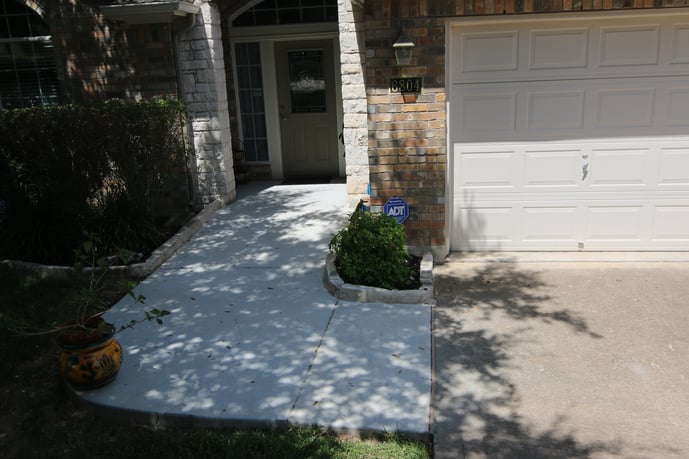
There is a distinct physical difference between the two methods once they are applied. Universal Design benefits from proactive planning producing permanent and long lasting modifications. For instance, Aging in Place design includes installing an aluminum ramp for accessing a stepped front porch for entering the front door. Using Universal Design a gradually sloping concrete sidewalk approach is installed to overcome the same steps to the front porch. The Universal Design process blends into the home and is not noticeable. The much faster and more frugal accessibility changes for Aging in Place deal directly with the homeowner’s or someone else within the family’s environmental needs. Universal Design, however, offers gradual choices through proactive planning to all of a home's residents no matter their age or physical capabilities concerning the future. Universal Design represents a paradigm transformation in how new homes or remodels are designed and built providing greater adaptability to everyone. The understanding, recognition, and use of Universal Design define the metamorphosis in future home building. The majority of consumers no longer accept track home builders offering inaccessible A, B, or C floor plans. A well thought out universal home design makes a difference in how well it accommodates the needs of all occupants and visitors throughout time. By adopting the Universal Design concept, consumers limit or reduce the need for further adaptations later to homes while beginning to Age in Place.

Tags:
aging in place remodeling,
aging in place home modifications,
aging in place home improvements in Austin,
accessible home remodeling,
Universal Design,,
Austin bath remodeling,
aging in place services,
home modifications for independent living Austin,
certified aging in place consultant in Austin,
aging in place specialist in Austin,
universal designbuilding for the future,
universal design remodeling contractor,
universal design building contractor,
7 principles of universal design,
applying principles of universal design in Austin,
barrier free remodeling,
Austin aging in place specialist,
universal design/build contractor,
universal design contractor,
why universal design,
what is universal design in Austin,
what is aging in place,
universal design techniques,
aging in place versus universal design
























